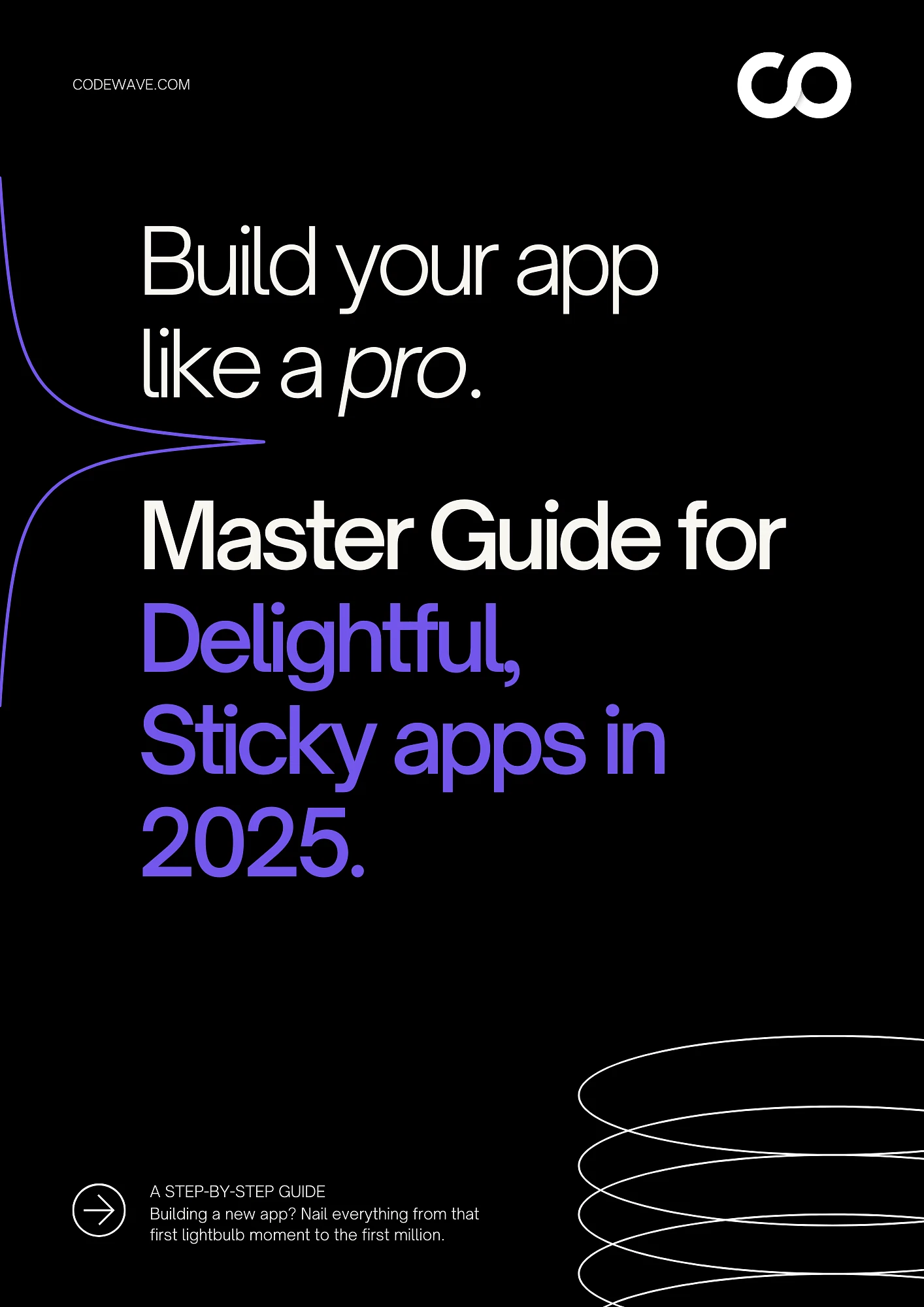In 2025, digital experience has become a make-or-break factor for Australian consumers. According to a national survey by Publicis Sapient, 53 percent of Australian consumers would switch brands if the digital experience does not meet their expectations. This highlights a clear shift in consumer behaviour. Product quality alone is no longer enough. Customers now expect fast, easy, relevant, and trustworthy interactions at every touchpoint.
Whether in retail, banking, healthcare, or government services, businesses in Australia are being judged not just by what they offer but how they deliver it. Every interaction is an opportunity to earn loyalty or lose it.
This blog explores the top customer experience trends shaping Australian businesses in 2025. We look at the technologies influencing customer behaviour, the strategies improving satisfaction and retention, and the operational shifts that support long-term growth.
If you want to stay competitive in the Australian market, understanding these trends is the first step toward delivering experiences that matter.
What Is Customer Experience in the Australian Context?
Customer experience (CX) in Australia is not just about faster checkouts or mobile-friendly interfaces. It includes the entire journey; from discovery to post-sale service, and how consistently that journey meets or exceeds local expectations around trust, accessibility, speed, and transparency.
In the Australian market, CX is closely tied to outcomes such as:
- Retention and lifetime value: A smooth digital claims process in insurance or a frictionless e-prescription flow in healthcare can significantly reduce churn. Telcos like Telstra and Medibank have seen measurable increases in satisfaction scores by redesigning these high-volume journeys.
- Consumer trust and brand switching: With over half of Australian consumers willing to switch brands after a poor digital experience, companies must focus on reducing errors, delays, and a lack of clarity at key service moments.
- Compliance and accessibility: The Disability Discrimination Act and WCAG 2.1 requirements make inclusive digital design a legal necessity. CX failures can trigger complaints to the Australian Human Rights Commission, impacting public perception.
- Operational efficiency: A well-designed CX reduces service costs. For example, implementing intelligent chat support or guided digital forms reduces the load on contact centers and improves time-to-resolution metrics.
CX is not a creative exercise. It is a performance function tied to measurable business KPIs like NPS, CSAT, first-call resolution, and cost-to-serve. In Australia, where expectations vary between urban and regional users and between digitally native and digitally reluctant segments, your experience strategy must adapt by geography, device, and customer capability.
Ready to Build Outcome-Driven CX with AI? Codewave helps Australian enterprises move from experimentation to execution with AI-powered CX.
Explore Codewave’s AI and ML Services
Top 2025 Customer Experience Trends in Australia and Their Business Impact
As customer expectations evolve, so must your digital experience strategies. In Australia, the next wave of CX innovation is not driven by novelty, but by measurable impact across retention, efficiency, and growth. Below are ten trends shaping CX outcomes for Australian businesses.
1. Personalised Journeys Driven by First-Party Data
With third-party cookies on their way out, Australian companies are shifting to first-party data strategies. Organisations are consolidating customer information from owned channels like mobile apps, websites, and CRMs to deliver highly tailored experiences.
Business outcomes:
- Higher conversion through relevant recommendations
- Reduced customer acquisition costs
- Increased customer lifetime value
2. Omnichannel Consistency Across Physical and Digital
Australian consumers expect the same quality of service whether interacting in-store, through a chatbot, or via a mobile app. Leading brands are investing in headless CMS and omnichannel orchestration platforms to unify messaging and experience.
Business outcomes:
- Greater brand trust and satisfaction
- Reduced support tickets from channel switching
- Improved retention due to consistent service quality
CX Consistency Across Channels Starts with Better Systems. Book a Free Consultation to align your CX stack with how Australians actually engage in 2025.
3. AI-Powered Customer Support and Automation
Banks, telcos, and retail brands across Australia are using AI assistants like ChatGPT to resolve tier-1 queries, route tickets intelligently, and generate personalised responses. AI is also being used to train frontline staff with conversational data.
Business outcomes:
- Reduced support cost per interaction
- Shorter resolution time and increased CSAT
- Higher employee productivity in service centers
4. Digital Accessibility and Inclusive Design
In compliance with the Disability Discrimination Act and WCAG 2.1 standards, more organisations in Australia are prioritising accessible CX. This includes screen-reader compatible layouts, alt-text on product images, and voice-enabled browsing.
Business outcomes:
- Expanded addressable market by including people with disabilities
- Lower legal risk under accessibility mandates
- Higher user satisfaction across demographics
5. Hyperlocalisation and Cultural Relevance
Australian users are responding better to CX strategies tailored to regional idioms, cultural contexts, and local preferences. Brands are translating not just language but sentiment, tone, and timing.
Business outcomes:
- Increased engagement from diverse user segments
- Higher campaign response rates in multicultural regions
- Better resonance in local brand storytelling
6. Real-Time Analytics and Predictive Support
Australian firms are using event-based data to offer proactive service. This includes reminding users about expiring subscriptions, offering personalised finance tips, or prompting cart recovery messages at the right moment.
Business outcomes:
- Decreased churn through timely intervention
- Increased average order value from upsell prompts
- Lower support load due to automated resolution triggers
7. Voice and Conversational Interfaces
Australian consumers are adopting voice assistants for daily tasks. Brands are embedding voice interfaces into mobile apps and kiosks, enabling tasks like ordering, checking account balances, or scheduling appointments.
Business outcomes:
- Enhanced usability for mobile and hands-free users
- Reduced form abandonment on mobile workflows
- Stronger brand recall in multi-modal environments
8. Sustainability and Ethical Transparency in CX
Australian customers are increasingly influenced by a brand’s sustainability practices. Businesses are now embedding carbon impact, ethical sourcing, and labor policies into product information and post-purchase journeys.
Business outcomes:
- Higher trust and preference from environmentally conscious consumers
- Improved brand loyalty and NPS
- Lower compliance and PR risk in regulated sectors
9. Augmented Reality (AR) for Confidence in Purchases
Retailers and real estate companies in Australia are deploying AR to simulate how products look in the user’s space. Furniture, eyewear, or paint can now be previewed through a phone camera before buying.
Business outcomes:
- Reduced product return rates
- Increased confidence in online purchases
- Higher engagement on mobile product pages
10. Seamless Payments and Embedded Financial Services
Organisations are integrating BNPL, insurance add-ons, and loyalty programs directly into CX journeys. This reduces the number of steps between product discovery and checkout.
Business outcomes:
- Increased average transaction size
- Higher checkout completion rates
- Additional revenue through financial partnerships
Also Read: Top AI Solutions to Improve Customer Experience in Australia
Common CX Challenges Faced by Australian Businesses
While customer expectations in Australia continue to rise, many organisations struggle to deliver consistent and value-driven customer experiences. Below are key challenges Australian companies face in scaling CX along with the business impact if left unaddressed.
1. Fragmented Customer Data Across Touchpoints
Most businesses operate with siloed systems where marketing, sales, support, and product teams all use separate tools. As a result, the customer journey lacks continuity.
Impact:
- Poor personalisation and repeated queries
- Lower NPS and customer satisfaction
- Missed upsell or cross-sell opportunities due to disconnected insights
2. Inconsistent Experiences Between Channels
Customers interact via mobile, web, social, and physical locations but many companies still cannot provide a consistent experience across all touchpoints.
Impact:
- Higher bounce rates and channel drop-offs
- Increased call center volumes due to incomplete digital journeys
- Erosion of brand trust over time
3. Overdependence on Legacy Systems
Many mid-sized and enterprise firms in Australia still rely on outdated CRM or ERP systems that limit integration with modern CX tools like AI chatbots or real-time analytics.
Impact:
- Slower support resolution and manual workflows
- Delays in launching new features or offers
- Higher operational costs and technical debt
4. Limited Internal CX Ownership
CX often falls between departments without clear KPIs or leadership accountability. In some organisations, it is still viewed as a customer service function rather than a growth enabler.
Impact:
- Inconsistent strategy and misaligned priorities
- Missed revenue from poor retention or upselling
- Difficulty in measuring true ROI of CX initiatives
5. Skills Gap in Data and AI Integration
While many Australian teams want to personalise CX using AI or predictive insights, few have the in-house talent to design and deploy these solutions effectively.
Impact:
- Underutilisation of MarTech and analytics platforms
- Increased vendor dependency and project delays
- Lack of competitive differentiation in digital experiences
6. Compliance Pressure Around Privacy and Consent
With the Privacy Act reforms underway, and increased awareness among Australian consumers, companies face growing scrutiny over how customer data is collected, stored, and used in CX workflows.
Impact:
- Risk of regulatory non-compliance and legal fines
- Erosion of customer trust if data is misused
- Delayed CX innovation due to security approval bottlenecks
These challenges are solvable with the right strategy, systems thinking, and AI tooling. Codewave works with Australian businesses to implement CX solutions that are not just compliant, but also drive measurable outcomes across support, sales, and loyalty.
Also Read: Using AI to enhance Customer Experience
How Codewave Helps Australian Enterprises Build CX That Performs
In Australia’s digital economy, experience defines growth. As customers expect faster service, transparent data use, and contextual engagement, enterprises need CX systems that are adaptive, compliant, and measurable. Codewave helps build these systems, integrating GenAI, automation, and privacy-first design to drive business performance.
What Codewave Delivers and How It Impacts Business:
AI Assistants That Reduce Operational Load
Custom GPT-based agents are deployed across web, mobile, and IVR to handle onboarding, support, and transactional flows. These assistants operate on your domain logic, reducing staff workload without sacrificing service quality.
How it works:
- Train models using sanitized policy documents and use-case flows
- Embed assistants into your CX stack with built-in escalation paths
- Track interactions using event-level telemetry and feedback prompts
Business outcome:
- Drop in Tier-1 support volumes
- Faster SLA resolution without increasing team size
Explore: Inject GenAI into your workflows
Consent-First, Compliant Data Journeys
Every data interaction is designed to meet Australia’s OAIC and APP standards. Customers manage their own data preferences while businesses stay audit-ready.
How it works:
- Micro-consent frameworks for specific data types and touchpoints
- Role-based access control with secure event logging
- Unified preference centers across digital channels
Business outcome:
- Stronger customer trust and retention
- Lower risk of regulatory penalties or complaints
Adaptive Personalisation Using Real-Time Signals
Instead of relying on static personas, real-time usage signals drive in-session personalisation; delivering more relevant content, nudges, and recommendations.
How it works:
- Connect telemetry from apps, CRM, and customer touchpoints
- Use LLMs to match signals to contextual next-best actions
- Adjust content and workflows dynamically, per user session
Business outcome:
- Higher conversion rates across funnels
- Fewer drop-offs and improved time-to-value
Omnichannel Experience with Seamless State Management
Context is preserved across app, web, retail, and support environments, allowing users to pick up where they left off without re-explaining their needs.
How it works:
- Real-time customer state synced across systems
- Session-aware APIs integrated with call centers and POS
- Unified profiles shared across web, mobile, chatbot, and IVR
Business outcome:
- Improved CSAT and NPS through consistent experiences
- Greater lifetime value and repeat engagement
CX Prototypes Delivered in 14 Days
Speed-to-impact is critical. Using modular components and GenAI accelerators, Codewave helps Australian businesses validate ideas before scaling.
How it works:
- Deploy pilots using pre-built CX templates and prompt libraries
- Measure impact through usage data and feedback loops
- Iterate quickly without vendor lock-in or full replatforming
Business outcome:
- Reduced time-to-launch for CX innovation
- Data-backed validation of what to scale and what to drop
Check out: Codewave’s Portfolio
Enterprise-Ready CX Architecture: Codewave’s Layered Approach
| Layer | Capability | Business Benefit |
| AI + Automation Layer | Intelligent assistants, adaptive recommendations | Operational efficiency and scale |
| Consent + Security | Data governance aligned to OAIC, secure infrastructure | Customer trust and regulatory readiness |
| Experience Layer | Mobile, web, and IVR interfaces | Channel consistency and reach |
| Observability Layer | Feedback triggers, real-time analytics | Continuous optimisation |
Looking to increase retention, reduce cost-to-serve, and ensure compliance in every CX workflow? Book a strategy call to explore outcome-driven transformation with AI-powered CX.
Frequently Asked Questions (FAQ)
Q: What are the biggest customer experience challenges in Australia right now?
A: The top issues include long wait times, inconsistent digital and in-store experiences, lack of personalisation, and difficulty navigating service channels. These challenges increase churn and lower trust, especially in sectors like telecom, banking, and insurance.
Q: Are Australians still preferring human service over AI and bots?
A: Yes. In 2025, most customers still value human interaction for complex or emotional queries. Automated systems are accepted only when they provide fast resolution or seamless handover to agents. Poor chatbot experiences remain one of the top reasons for customer frustration.
Q: What do customers expect from Australian brands in 2025?
A: Speed, clarity, and control. Customers want faster resolution without repeating themselves across channels, clear data privacy practices, and consistent service whether they engage via mobile app, phone, or in person.
Q: Which industries in Australia see the highest impact from improved CX?
A: Telecom, banking, health, utilities, and e-commerce. These sectors see immediate gains in retention, NPS, and reduced cost to serve when investing in AI-enabled CX improvements and accessible digital journeys.
Q: How quickly can a company improve its CX outcomes?
A: With a targeted AI and automation rollout, many enterprises see measurable results within 90 days. This includes reduction in support volumes, higher digital adoption, and stronger customer satisfaction scores.
Q: Is CX mostly a front-end concern or a system-wide one?
A: CX is system-wide. It spans interfaces, policies, integrations, data handling, and even team training. A great UI without connected back-end logic or compliant data flows leads to broken experiences and regulatory risks.
Codewave is a UX first design thinking & digital transformation services company, designing & engineering innovative mobile apps, cloud, & edge solutions.







